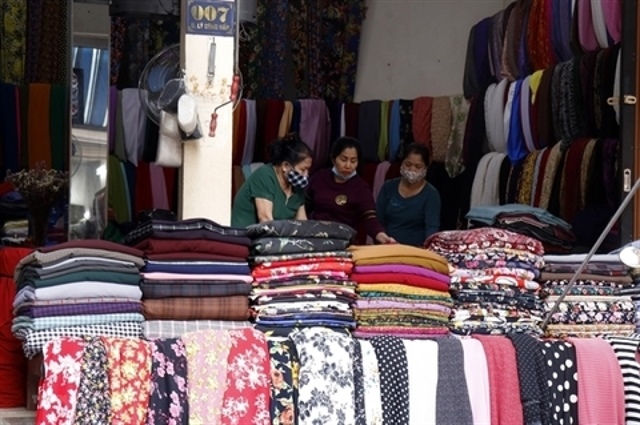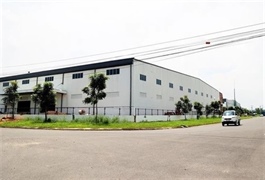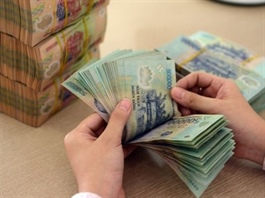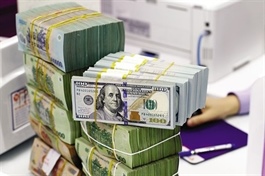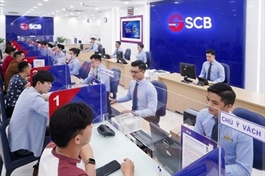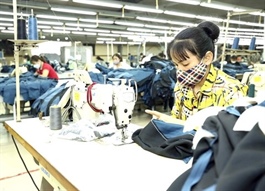Enhancing local trade finance in Việt Nam could lead to a $55 billion annual boost in trade
Enhancing local trade finance in Việt Nam could lead to a $55 billion annual boost in trade
Enhancing access to affordable trade finance has the potential to significantly improve Việt Nam's imports and exports by up to 6 and 9 per cent, respectively, which equates to an annual increase in merchandise trade of US$55 billion.

Participants at the workshop. — Photo courtesy of IFC |
This insight is derived from a report titled "Trade Finance in the Mekong Region", authored by the International Finance Corporation (IFC) and the World Trade Organisation (WTO). The report provides an in-depth analysis of the current state of trade finance in the Mekong region, with a particular focus on Việt Nam, Cambodia and Laos.
Trade finance refers financial products and services that facilitate international trade and commerce, such as letters of credit (L/C), trade credit insurance, export financing and factoring. It plays a critical role in helping businesses manage risks, access working capital, and support the flow of goods and services across borders.
The Mekong Region has emerged as a vibrant trade hub, with trade values exceeding GDP in all three economies. Việt Nam's trade-to-GDP ratio is notably high at 185 per cent, reflecting a significant increase in trade flows over the past decade. This growth is attributed to factors such as integration into global supply chains, improved export performance and favourable conditions for foreign direct investment. Additionally, Việt Nam has benefited from production relocations, trade diversions and foreign investments.
At the workshop on Thursday to introduce the report, Thomas Jacobs, IFC Country Manager for Việt Nam, Cambodia and Laos, highlighted that despite being a trade-oriented economy, Việt Nam's local trade finance is underutilised, traditional and segmented.
In 2022, Vietnamese banks supported only 21 per cent of the country's total merchandise trade of $731 billion, representing a mere 22 per cent of total banking assets. These figures are significantly lower than the 60 to 80 per cent coverage seen in advanced economies and even less than the levels seen in developing regions like West Africa.
Jacobs emphasised that Việt Nam is a key focus for IFC's trade finance programme, and IFC collaborates closely with numerous banks in the market to facilitate import and export financing, with Việt Nam consistently being IFC's largest trade finance market in Asia, typically supporting around $1 billion in trade annually.
In the report, importers and exporters cited high collateral requirements and onerous application processes as main reasons for not seeking support from local banks. Vietnamese banks rejected an average of 12 per cent of trade finance requests, mainly from small and medium enterprises (SMEs), resulting in approximately $20.3 billion in unmet demand in 2022, primarily due to a lack of collateral and high credit risk.
Low supply chain finance
The report showed supply chain finance makes up only 2 per cent of the market. This is surprising given Việt Nam's high level of trade integration.
Marc Auboin, Counsellor in the Economic Research and Statistics Division of the WTO, highlighted that specialised skills and platforms are required to manage the complexities of receivables and payables for companies, making it challenging for Vietnamese banks to adapt. Supply chain finance, unlike traditional trade finance, manages all invoices for imports and exports as a unified ecosystem. SMEs face obstacles in accessing trade finance due to inadequate infrastructure for credit risk assessment, but collaboration with fintech firms could expand access to financing for informal businesses.
He said this form of finance management is innovative and complicated, and Vietnamese banks are only starting to adapt to it, with only three or four banks providing this service.
“Today, fintech companies can work with informal businesses by analysing their online payment cycles and reconstructing accounts. This collaboration allows banks to extend their services to more informal companies,” Auboin told Việt Nam News.
According to Nguyễn Quốc Hùng, General Secretary of Vietnam Banks' Association, there is a need for a balanced policy to promote trade finance for the supply chain so businesses within the chain can access it. Hùng said the impact of COVID-19 has not entirely vanished, while geopolitical instability has disrupted supply chains and reduced supply of goods, posing a challenge to expanding financing in this sector.
Jacobs said the potential for growth in supply chain finance in Việt Nam lies in the increasing number of local producers of parts and components engaged in international trade, who are not part of current supply chain finance arrangements dominated by foreign banks serving large subsidiaries of foreign firms exporting finished products.
“Unlocking meagre cash resources trapped in those supply chains is a necessity for the ability of local firms, particularly the smallest, to survive, invest and move up technologically within the value chain,” Jacobs said.





